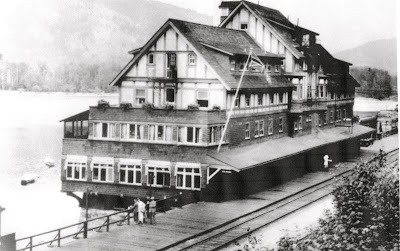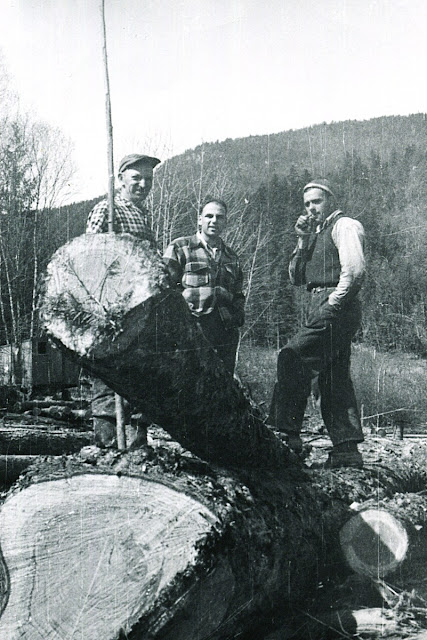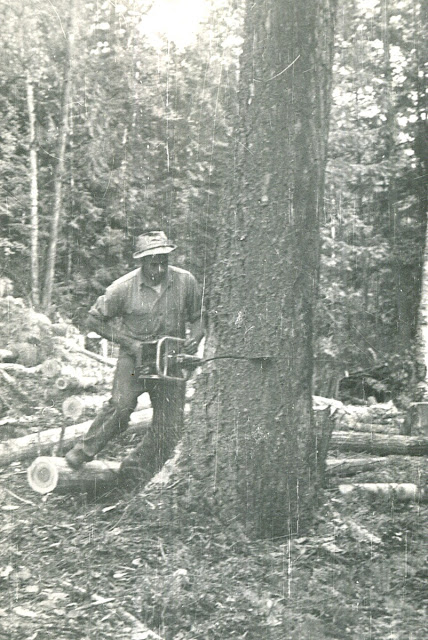Caroline Fleur de Lys was often alone the winter of 1961 when Gus and Renee were in Switzerland. In the letters to her daughter she made reference to the various activities that drew Eddy out of the house. One morning she is writing alone in the house and remarks to her daughter "Eddy has left two and half hours ago for Vernon. I cannot see the lake or the mountains it is snowing so hard". The sense of isolation is palatable and I am thankful reading the letters so many years later that she had the two dogs, Cuddly and Sandy, for company.
The neighbors also played a significant role that winter and it would appear that they were often coming by the house to check in on "Grandmother Caroline". Caroline was asked by Mrs. Berger and Mary-Lou to give them French lessons which would have provided some welcome diversion.
There is a deep silence to winter when the snow arrives and muffles all sound. Even the winter birds seem to lose their songs during the winter months. The cold and the snow are challenges for an elderly person and the winter months bring health problems. Caroline developed a persistent cough that was immune to ministrations until she joyously proclaimed that Buckleys cough syrup had produced a cure.
The greatest marvel that winter seemed to be the furnace. Eddy spent many hours installing the furnace "producing holes throughout the house" until the day that Caroline was able to write that "it is 32 degrees outside (f) and inside all through the house it is an equal temperature of 80 degrees" (f).
As I read the letters I am impressed by Caroline's stoicism. She writes of how thankful she is for the care from both Eddy and the neighbors and the company of the dogs. She makes light of her health problems and the challenges of her living conditions. In all her letters the closest remark she ever made to a complaint was about the lack of running water when she first moved to the farm.
Winter Scenes
The neighbors also played a significant role that winter and it would appear that they were often coming by the house to check in on "Grandmother Caroline". Caroline was asked by Mrs. Berger and Mary-Lou to give them French lessons which would have provided some welcome diversion.
There is a deep silence to winter when the snow arrives and muffles all sound. Even the winter birds seem to lose their songs during the winter months. The cold and the snow are challenges for an elderly person and the winter months bring health problems. Caroline developed a persistent cough that was immune to ministrations until she joyously proclaimed that Buckleys cough syrup had produced a cure.
The greatest marvel that winter seemed to be the furnace. Eddy spent many hours installing the furnace "producing holes throughout the house" until the day that Caroline was able to write that "it is 32 degrees outside (f) and inside all through the house it is an equal temperature of 80 degrees" (f).
As I read the letters I am impressed by Caroline's stoicism. She writes of how thankful she is for the care from both Eddy and the neighbors and the company of the dogs. She makes light of her health problems and the challenges of her living conditions. In all her letters the closest remark she ever made to a complaint was about the lack of running water when she first moved to the farm.
Winter Scenes















































 Edmond and Augustin - the bulldozer doing field work.
Edmond and Augustin - the bulldozer doing field work.






















